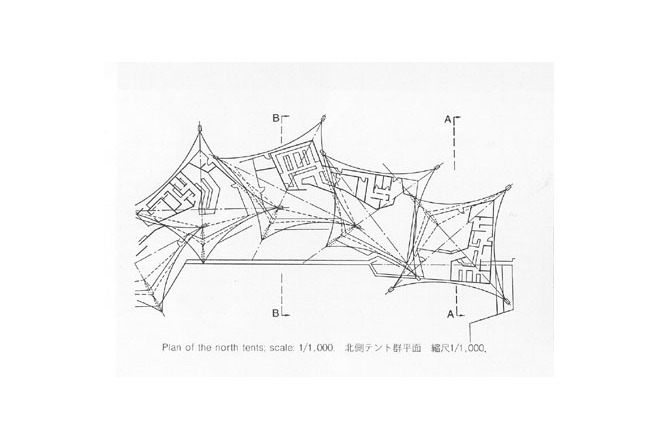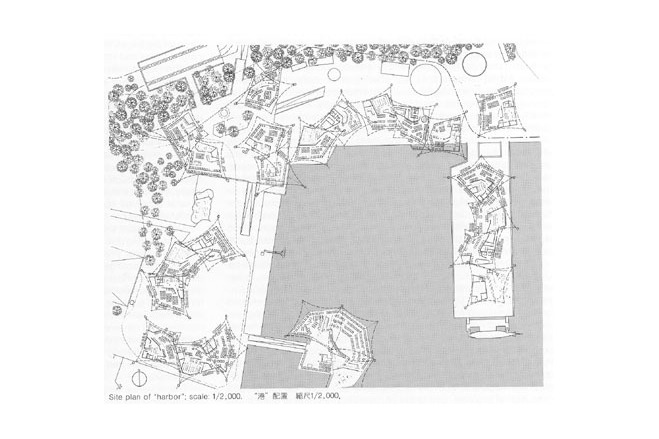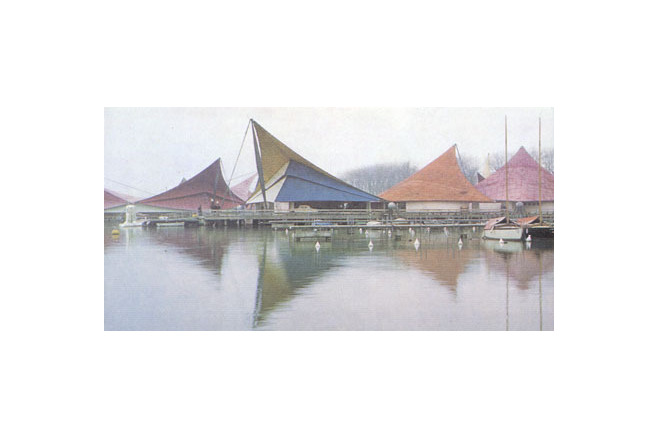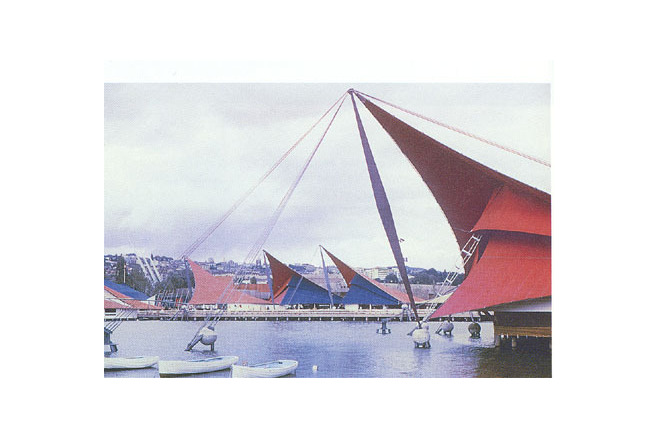Expo 1964 (Lausanne): The Harbour, Swiss National Exhibition
General information
-
Location address
Lausanne
-
Location country
Switzerland
-
Function of building
Exhibition
-
Climatic zone
Temperate - cold winters and mild summers
Description
In regular intervals of a few years, national exhibitions are held traditionally in varying places in Switzerland. Always these events have a great importance for the public, presenting attractive and interesting things in terms of architecture and facilities, landscape and environment, as well as of the exhibited pieces of art and culture, trade and industry.
The swiss architect Marc Saugey had the idea to use large tents for a major part of the Lausanne exhibition, situated right at the shore of the lake of Geneva, to symbolize the "Swiss Alps" and their snow and rocks (in French: neige et rocs) with freely swinging and steeply rising forms of membrane structures. So, after the principle forms and the basic layouts were roughly decided on, Frei Otto was asked to develop the final geometry and to resolve the structural difficulties in fact, to transfer an architectural vision into a built reality.
Twenty-four pavilions in total are arranged around a small artificial boat harbour, overlapping and penetrating each other. Most of the pavilions are simple shaped four-point sails, however with a remarkable large span of 36 m diagonal distance between low and high point. Much more spectacular and striking is the group of five extremely peaked pavilions, roofing th eopen air restaurant in the northeast corner of the harbour. To provide sufficient curvature in such a large roof surface, the edge cables had to merge almost tangentially into the top of the 24 m long mast. Additionally, integrated along the edge cables to the mast top, each of these pavilions had two smaller three-point sails which were getting their saddle-shaped curvature due to the very strongly curved edge cables. In perfect harmony with the inclined position of the slender latticed mast, this very effective and elegant architectural appearance of this group of pavilions was created.
Structurally the pavilions are not at all usual membrane structures but prestressed equally meshed steel cable net structures, covered with cotton fabric as a weather skin. The cable sof the net are disguised in lipped PVC-pouches which continuously are sewn on the fabric. All main stresses are taken by the cable net whose deformation under load is much smaller than for the fabric.
This playful lightness of the form - even if it was just an "endless" reepetition of always the same basic four-point shape for all pavilions - still was underlined by a cheerful interplay of varying red, yellow and white colors of the roof skin. With the lively waterfront of the lake in the foreground and the green pastures on high rising mountains in th ebackground, this is an exceptional example what an architecture with lightweight and widespan membrane structures can achieve.
(Jürgen W. Hennicke, Institute for Lightweight Structures at University of Stuttgart)
[Membrane Designs and Structures in the World, Kazuo Ishii, p37]
Description of the environmental conditions
Material of the cover
-
Cable-net/Fabric/Hybrid/Foil
Cable
Main dimensions and form
-
Total length (m)
36
Duration of use
-
Temporary or permanent structure
Permanent
-
Convertible or mobile
Convertible
-
Design lifespan in years
00-05
Involved companies
-
Architects
Marc Saugey
-
Contractors
Editor
-
Editor
Marijke M. Mollaert






